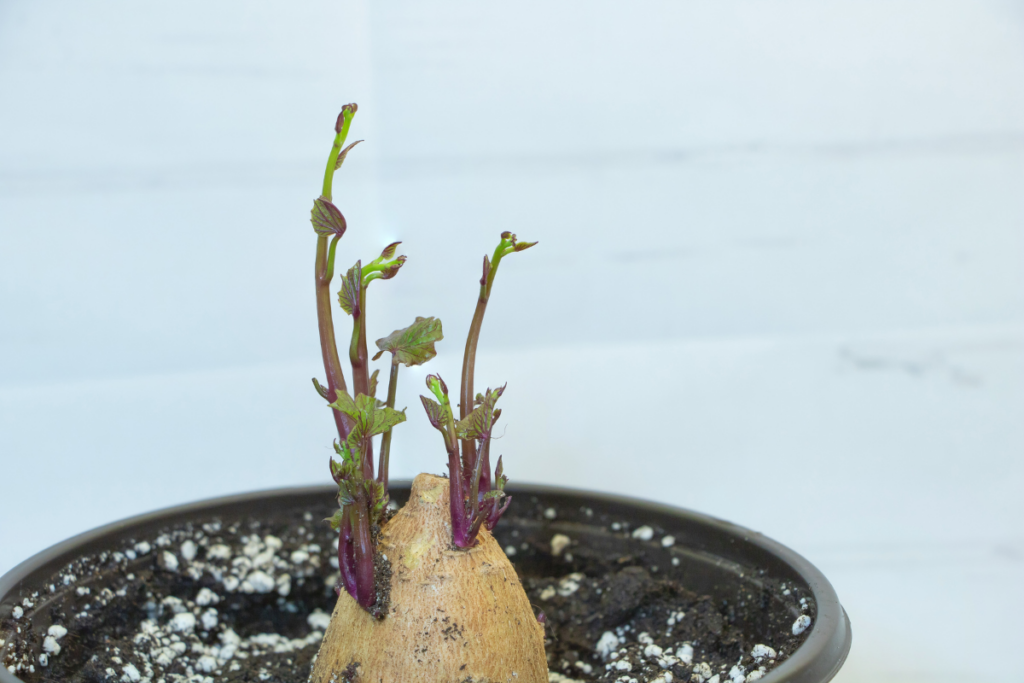Bob explains why now is the time to start growing yours
You could buy ‘slips’ (which are rooted cuttings) but they’re seldom available for some months, by which time too much of the growing season has passed. You see sweet potatoes need a long growing period to make a really good crop, so the sooner you start, the better. Unfortunately, you can’t plant sweet potatoes like ordinary potatoes, they need more warmth and the roots would otherwise just rot.
Instead, bury a middling sized supermarket specimen in a tall pot of slightly moist, gritty compost, cover with a plastic bag and keep really warm. An airing cupboard is perfect.
Keep an eye on it, and when shoots appear above the compost tip, then it’s time to carefully have a look. Your tuber will have sprouted wee shoots which will have small roots and these can be prised off. Pot these slips up and keep them in a warm, light place as if they were tomato seedlings, potting up as the season advances and they will slowly become valiant climbers in need of canes to wind round and round. The foliage (haulm) must not be allowed to touch soil or it will root wasting energy on a mass of thin roots.
Now it’s fine to move sweet potatoes outdoors for the summer, just as with tomatoes (in many areas). Their lush green foliage means they’re really quite decorative, say in tubs on a patio, especially as the vines often flower.

It is not such a great idea to plant them in the ground though
There are several reasons. First it’s too cold compared to in a tub. Secondly too many soil pests just love to munch upon sweet potatoes. Thirdly, sweet potatoes dive deeper than potatoes and are tedious to dig up, whereas in a tub they’re simple to collect. Finally, in tubs you can take them under cover at the end of the season for another month or more of growth and an even bigger crop.
If you like spinach you can use the foliage as spinach or in stir fries, of course take too much and you’ll grow smaller roots to dig later. Perhaps have separate plants for each purpose.
It’s very easy to have more
That first tuber can produce three or four lots of shoots if repacked back in the warm. Then any finger length cutting of vine can be rooted easily making even more plants, which in turn provide further cuttings. These are hungry, thirsty plants and prefer large tubs or black plastic sacks full of rich potting compost to do well. If you start immediately you will have your first new roots in late summer, though the longer you leave them the bigger they’ll get. Ideally as the frosts approach move the tubs under cover somewhere light and reduce watering to just enough to prevent wilting. As the days shorten, cease watering and let the foliage wither and cut it off but leave the roots untouched in their tubs of dried out compost until they’re wanted, ideally keeping them somewhere warm and very dry.
Find more tips, advice and articles like this at the Amateur Gardening website. Subscribe to Amateur Gardening magazine now.





